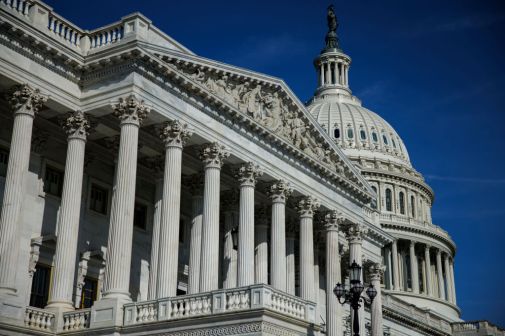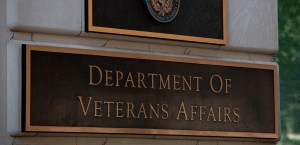IT remains high in Senate’s nearly $2 trillion rescue package, but less than House’s draft

The coronavirus response package negotiated by Senate Democrats and the White House appears to propose less IT money for federal agencies than a bill drafted by the House, but still more than an original Office of Management and Budget letter outlining federal agencies’ needs.
The Senate is expected to vote on the bill Wednesday, and if House Democrats find it “satisfactory,” they hope to “swiftly pass” the legislation, a Democratic house aide told FedScoop. That vote likely would be Thursday, reports said.
The Senate’s nearly $2 trillion rescue bill, called the Coronavirus Aid, Relief, and Economic Security Act or the CARES Act, offers different line-items and general funding levels for agencies’ IT spending than the House’s draft. That chamber drafted its own $2.5 trillion emergency funding bill Monday.
The Senate bill has a smoother path to becoming law because the House would likely need to reconvene in full to make progress on its version. The House can clear the Senate bill by voice vote with just a few members in the chamber.
The processes for sending emergency funding to government agencies started on March 17 with a letter from the Office of Management and Budget that requested $45.8 billion for a wide range of needs.
In many cases, policies were in place to allow agencies to adapt their IT to the nation’s new reality of social distancing and closed offices. The funding for increases in telework, however, was not.
Billions for telehealth
The Senate’s bill would give the Department of Veterans Affairs $2.15 billion specific to IT spending to buy new devices for and improve networks for telehealth and telework, according to a summary of the emergency spending. Funding from the bill’s $19.6 billion total for the VA could also be applied to new software licenses and VPNs. OMB initially requested just over $1 billion for the VA’s IT emergency needs and the House would have appropriated $3 billion.
New in the Senate bill has a provision allowing the VA to enter into free or discounted telecommunications contracts to provide “expanded mental health services to isolated veterans.” The bill would also allow the VA to waive in-person renewals required for some telehealth arrangements.
The Senate’s bill gives more than $1 billion to the Indian Health Services that would include $65 million for electronic health records “stabilization and support.” Money directed specifically for supporting telehealth needs is not defined in the Senate bill’s appropriations text.
The Department of Health and Human Services could draw on a pool of $27 billion that would remain available through fiscal 2024 for “workforce modernization” and telehealth needs as the agency navigates a remote workforce while leading response efforts. A separate $180 million budget boost to HHS would be specifically for rural telehealth IT, according to the bill text.
The Federal Communications Commission would receive $200 million to provide health care workers “telecommunications services, information services, and devices necessary” as they combat the coronavirus. The House bill included this provision, but it was not included in the initial OMB letter.
Needs on telework
Much of the Senate’s line-item appropriations for telework are similar to the OMB letter, but senators included several additions. Those include money for the FBI, other Department of Justice components and the Army Corps of Engineers. The DOD also would get an additional $300 million to procure “IT equipment and increase bandwidth,” according to a summary issued by senators.
The Department of Interior would be able to spend a $158 million budget increase on purchases that include expanding telework capabilities, among other things. The Department of Indian Education, which is a part of Interior, would get its own $69 million supplement to spend on services that include teleworking capabilities.
Some telework funds get chopped, some stay the same
One major part missing from the Senate bill is the $3 billion infusion the House bill would have appropriated for the Technology Modernization Fund, according to the Senate’s summary. Telework and IT-specific funding for the Forest Service is not included in the Senate bill as well, nor is a provision requested in the OMB letter for the 18F digital services team to build a COVID-19 public information website.
The Senate bill would provide $300,000 to the Social Security Administration to cover costs related to teleworking and workforce disruptions. It is the same as what the House bill would have offered. The Senate bill would also provide roughly the same to the Federal Emergency Management Agency (FEMA) to include IT spending and teleworking support, just shy of $45 million.






